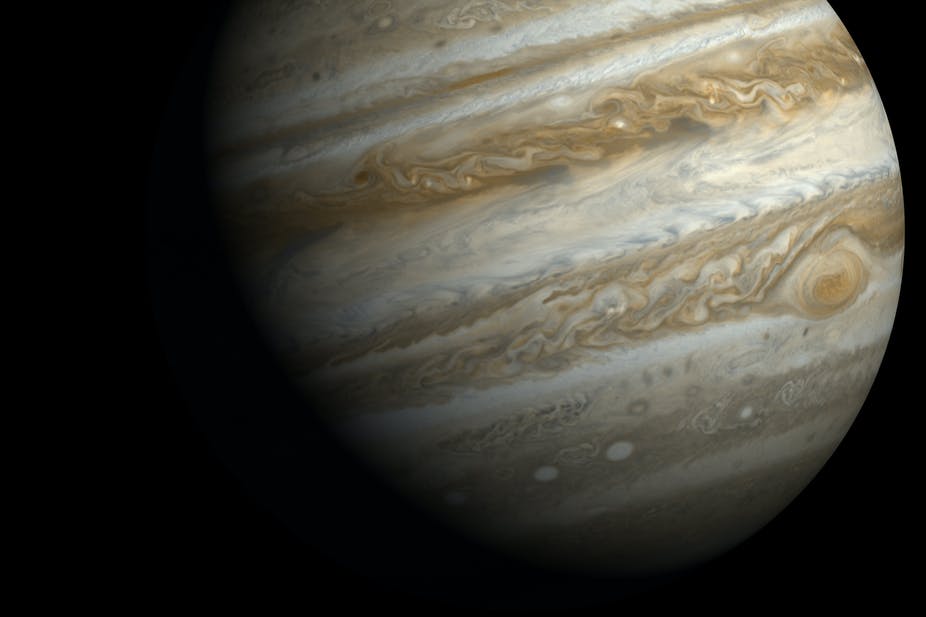Study reveals that giant planets could reach their “maturity” much earlier than previously thought

It is the first time that masses for such young giant planets are obtained
IEEC director and ICE-CSIC researcher Ignasi Ribas has participated in the study, along with researchers from the Instituto de Astrofísica de Canarias (IAC) and other institutions from Spain, Italy, Germany, Belgium, UK, and Mexico
An international team of scientists has measured for the first time the masses of the giant planets of the V1298 Tau system, just 20 million years old. Masses for such young giant planets had not been obtained previously. The study, representing the first evidence that these objects can reach their final size within their first 20 million years of evolution, is published today in the journal Nature Astronomy.
For this result researchers have used radial velocity measurements from the spectrographs HARPS-N, at the Roque de los Muchachos Observatory (La Palma, Canary Islands), and CARMENES, at the Calar Alto Observatory (Almería, Spain). Ignasi Ribas, director of the Institute of Space Studies of Catalonia (IEEC — Institut d’Estudis Espacials de Catalunya) and researcher at the Institute of Space Sciences (ICE-CSIC), has also participated in the study, led by researchers of the Instituto de Astrofísica de Canarias (IAC) together with other institutions from Spain, Italy, Germany, Belgium, UK, and Mexico.
The study, led by IAC researcher Alejandro Suárez Mascareño, reports the measurement of the masses of two giant planets that orbit the young solar-type star V1298 Tau, showing that they are similar to those of the giant planets of the Solar System or other known systems that are in their “maturity”. The results of this work thus help to build a more solid idea of the early evolution of planetary systems like ours.

The giant planets begin their evolution as bodies with a larger size to later contract over hundreds or even billions of
years / Gabriel Pérez Díaz, SMM (IAC).
“The characterization of very young planets is extraordinarily difficult”, says Suárez Mascareño, first author of the publication, who asserts that “the parent stars have very high levels of activity and until very recently it was unthinkable to even try”. And he adds: “Only thanks to the combination of detections made with space telescopes, combined with intense radial velocity campaigns from Earth-based observatories and the use of the most advanced analysis techniques, it was possible to start seeing what is happening in such early stages of the evolution of planetary systems”.
Planets V1298 Tau b and e were discovered in 2019 by a team led by Trevor David (Jet Propulsion Laboratory) using data from NASA's Kepler space telescope, which allowed the measurement of their sizes, slightly smaller than Jupiter, and of their orbital periods, 24 and 40 days for V1298 Tau b and e, respectively. In order to measure their masses, it has been necessary to separate the signals generated by these planets from that corresponding to the star’s activity, almost ten times greater.
According to the study, these measurements allow us to test current ideas about the formation of planetary systems. “For many years, theoretical models have indicated that giant planets begin their evolution as bodies with a larger size, and later they contract over hundreds millions or even billions of years”, explains Víctor J. Sánchez Béjar, researcher at IAC and co-author of the work. “We now know that they can actually reach a size similar to that of the planets in the Solar System in a very short time,” he notes.
“We still do not know if the system V1298 Tau is a normal case and its evolution is similar to that of most planets or if we are facing an exceptional case; if this were the normal scenario, it would mean that the evolution of planets like Jupiter and Saturn could have been very different from what we think”, comments Nicolas Lodieu, also an IAC researcher and co-author of the study.
To achieve the measurement of these masses, the study has required a significant observational effort and the collaboration of multiple observatories and institutions from different countries. Observations taken from Las Cumbres Observatory, a network of telescopes located around the world, have been used to continuously monitor the variations of the star's activity.
More information
This research is presented in a paper entitled “Rapid contraction of giant planets orbiting the 20 million-years old star V1298 Tau”, by A. Suárez Mascareño et al., published in the journal Nature Astronomy on 2 December 2021.
The Institute of Space Studies of Catalonia (IEEC — Institut d’Estudis Espacials de Catalunya) promotes and coordinates space research and technology development in Catalonia for the benefit of society. IEEC fosters collaborations both locally and worldwide and is an efficient agent of knowledge, innovation and technology transfer. As a result of 25 years of high-quality research, done in collaboration with major international organisations, IEEC ranks among the best international research centers, focusing on areas such as: astrophysics, cosmology, planetary science, and Earth Observation. IEEC’s engineering division develops instrumentation for ground- and space-based projects, and has extensive experience in working with private or public organisations from the aerospace and other innovation sectors.
IEEC is a private non-profit foundation, governed by a Board of Trustees composed of Generalitat de Catalunya and four other institutions that each have a research unit, which together constitute the core of IEEC R&D activity: the Universitat de Barcelona (UB) with the research unit ICCUB — Institute of Cosmos Sciences; the Universitat Autònoma de Barcelona (UAB) with the research unit CERES — Center of Space Studies and Research; the Universitat Politècnica de Catalunya · BarcelonaTech (UPC) with the research unit CTE — Research Group in Space Sciences and Technologies; the Spanish Research Council (CSIC) with the research unit ICE — Institute of Space Sciences. IEEC is a CERCA (Centres de Recerca de Catalunya) center.
Contacts
IEEC Communication Office
Barcelona, Spain
Ana Montaner and Sònia Bagudanch
E-mail: comunicacio@ieec.cat
Lead Researcher
Instituto de Astrofísica de Canarias (IAC)
Headquarters: Tenerife, Spain
Alejandro Suárez Mascareño
E-mail: alejandro.suarez.mascareno@iac.es
